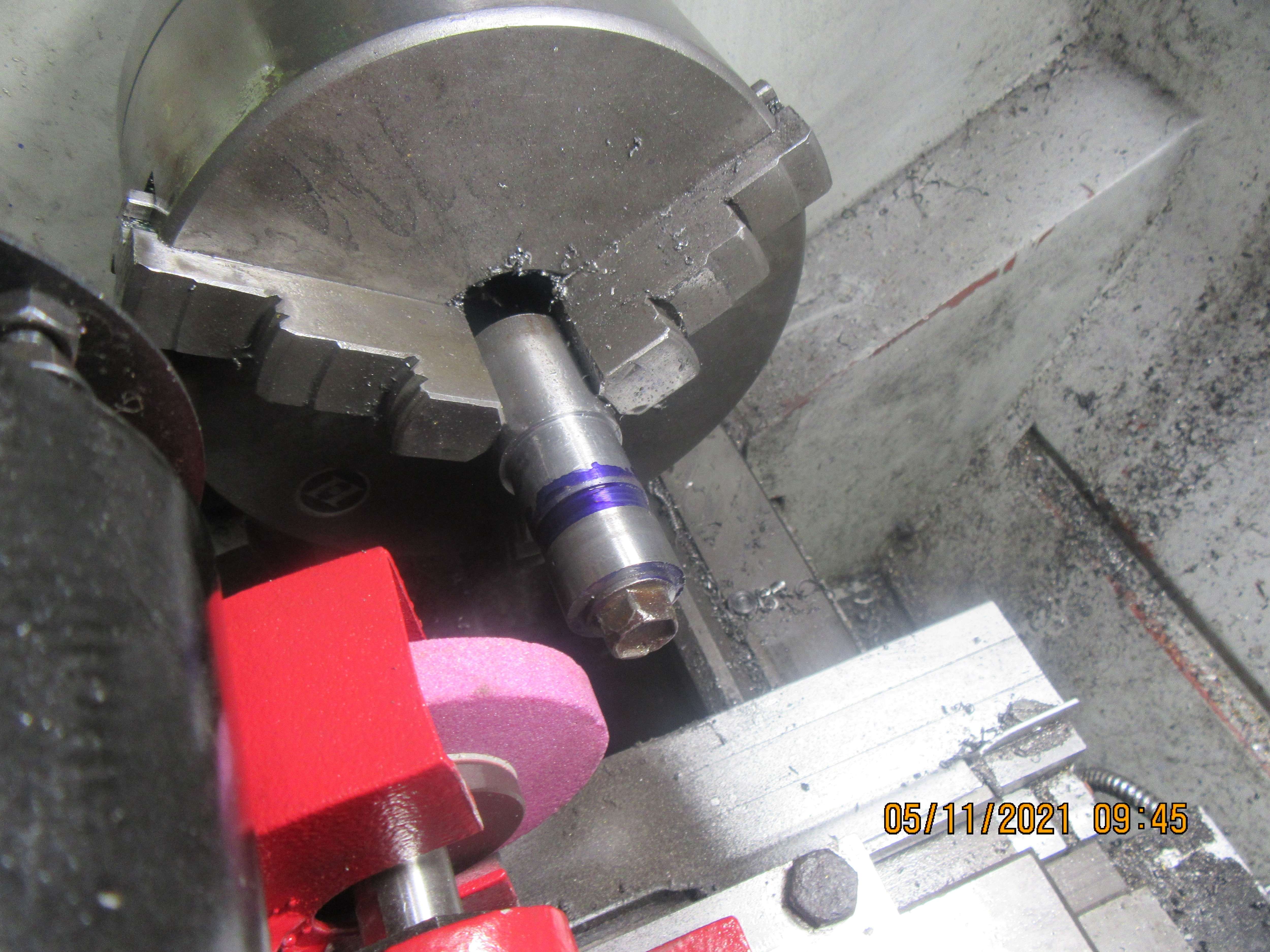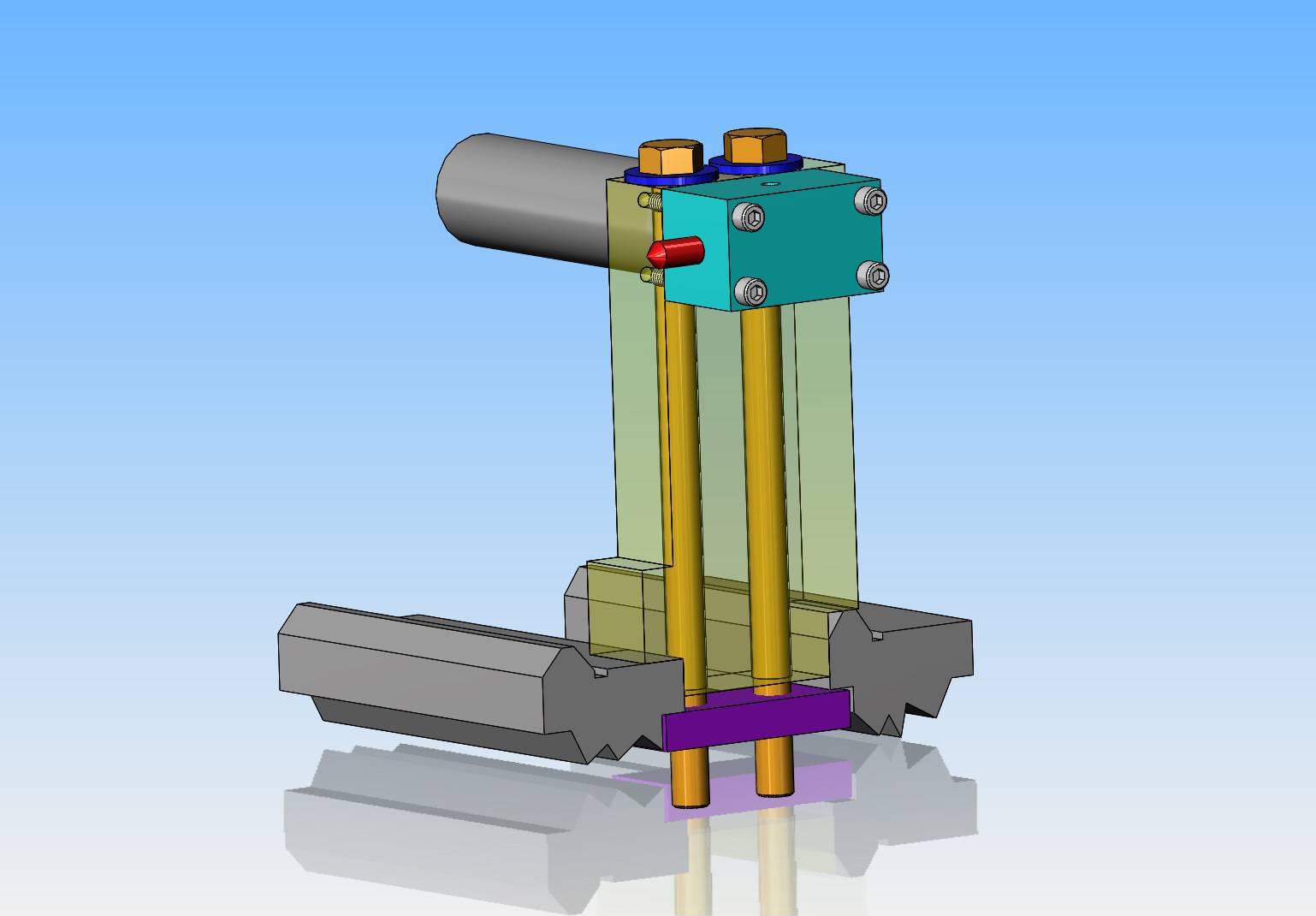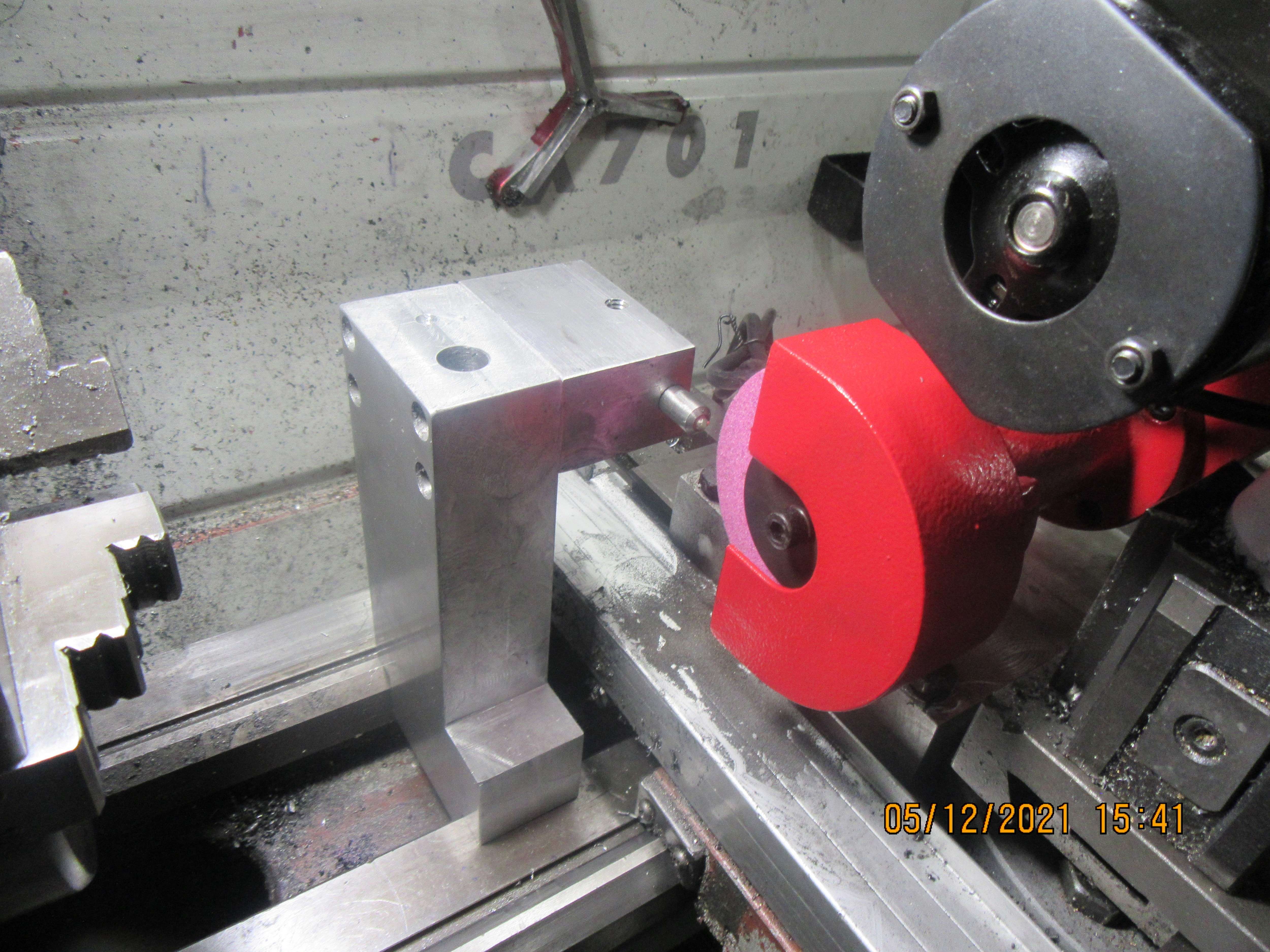Oh, My Father made a fixture - basically the same as Mr. Chadwicks - and used his model cylinders as the gauge for setting the rings for size. He didn't have a grinder on his 1930 3" lathe, but just took the finest cut with a freshly sharpened and dressed tool. He had compression straight off.
Brian, Winding the engine by electric motor probably won't bed-in rings against the bore, as the rings in service rely upon gas pressure for most of their tangential force to push them against the bore. Wound by motor, they are more likely just to "float" over the lubricant - sorry, lapping paste? - rather than apply enough pressure to "cut metal". Hepworth's just did a short lapping with lapping paste in dummy cylinders, which rotated maybe 20degrees between each stroke, and on a crank arrangement so the rings effectively saw the few degrees oscillation of their true axis in relation to the axis of the bore, as they will in a finished engine. This "barrelling" effectively "took the corners off" and was only measurable at very high magnification. But it meant that the rings assembled to an engine didn't really need running-in, as they were already run-in to a circle of bore size. Without the factory machine, we have to run-in models - typically at half-load and half max. speed for an hour or more. (Maybe we don't all manage that?). It takes a long time on models and real engines that are without the lapping compound used in the factory, but with lubricating oil instead.
Therefore, there is some advantage of bought rings... but we usually "get by" with the imperfections we can't overcome in our workshops.
My plan is to make some wire rings. But only after I have made the rest of the engine? - Next winter, possibly? First I'll try O-rings though?
Hope this helps?
K2
































![DreamPlan Home Design and Landscaping Software Free for Windows [PC Download]](https://m.media-amazon.com/images/I/51kvZH2dVLL._SL500_.jpg)






























